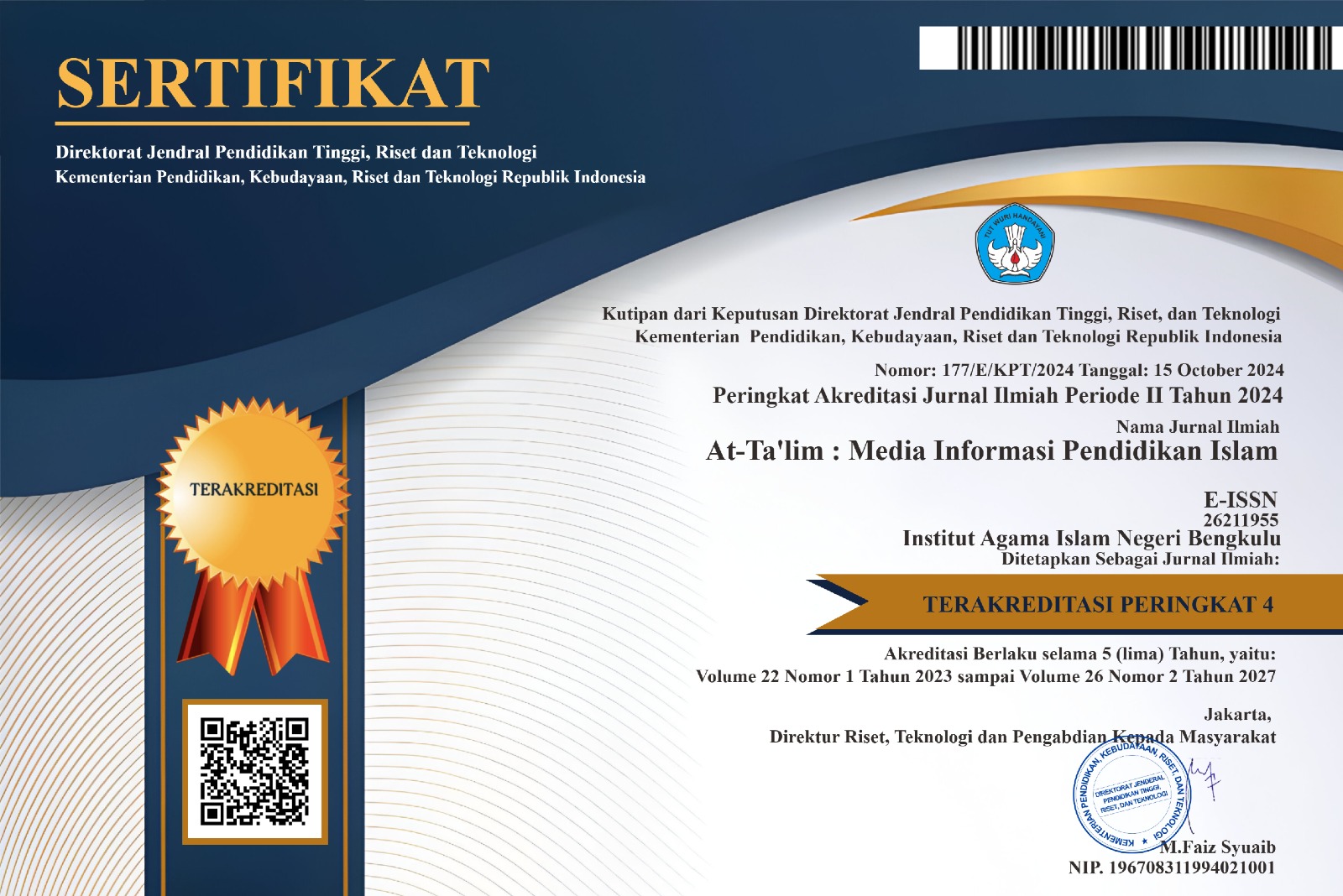At-Ta'lim: Media Informasi Pendidikan Islam operates a rigorous and transparent peer-review process that aims to maximize quality. Peer-review is handled by researchers and scholars. Every submission to At-Ta'lim: Media Informasi Pendidikan Islam will be evaluated solely based on academic quality and scientific relevance.
To ensure objectivity and impartiality in the review process, this journal adopts a double-blind peer review system, in which both the identities of authors and reviewers are concealed from each other throughout the evaluation process. This practice is intended to eliminate potential biases and uphold high academic standards. A summary of the editorial process is given in the flowchart below:
|
SUBMISSION TO 1ST DECISION |
ARTICLE PEER REVIEW PROCESS: |
SUBMISSION TO ACCEPTED |
All submitted manuscripts will be processed and selected by the journal editorial team and reviewed by the reviewer team through a double-blind review process to ensure the quality of manuscripts published in the journal. At-Ta’lim: Media Informasi Pendidikan Islam upholds a rigorous, ethical, and transparent editorial decision-making process to ensure the publication of high-quality, original, and scientifically relevant research. This policy outlines the editorial workflow, responsibilities, and standards used throughout the peer-review and publication process.
1. Initial Manuscript Screening
All submitted manuscripts undergo a preliminary screening by the Editor-in-Chief or assigned Section Editors. This step evaluates: (1) Relevance to the journal’s scope and focus; (2) Compliance with author guidelines and formatting standards; (3) Originality and potential contribution to the field; (4) Plagiarism screening using detection software (e.g., Turnitin).
Manuscripts that do not meet these basic requirements may be desk-rejected without entering the peer-review phase.
2. Assignment of Reviewers
Manuscripts that pass the initial screening are assigned to at least two independent reviewers with expertise in the manuscript’s subject area.
The journal applies a double-blind peer review process, where the identities of both authors and reviewers are concealed from each other to maintain objectivity and fairness.
3. Peer Review Process
Reviewers are expected to assess the manuscript on the basis of: (1) Novelty and originality; (2) Clarity of objectives and problem formulation; (3) Research methodology and analytical rigor; (4) Interpretation of results and discussion depth; (5) Citations of relevant and recent literature; (6) Ethical soundness and scientific accuracy.
Reviewers will recommend one of the following decisions:
- Accept without revisions
- Accept with minor revisions
- Major revisions required
- Reject
4. Editorial Evaluation and Decision
The assigned editor evaluates reviewer comments and recommendations, considering: (1) Consensus among reviewers; (2) Validity of criticisms and suggestions; (3) Author responses to previous feedback (if any).
If reviewers disagree significantly, the editor may invite a third reviewer or make an editorial judgment based on balanced scientific reasoning.
5. Author Revisions
Authors are required to revise their manuscript in response to reviewer feedback within a designated time frame. Revised submissions may: (1) Be re-reviewed (in the case of major revisions); (2) Be checked directly by the editor (for minor revisions); (3) Failure to adequately address comments may result in rejection.
6. Final Editorial Decision
The Editor-in-Chief holds the final authority on whether a manuscript is accepted or rejected for publication. This decision is based on the scientific merit of the manuscript, reviewer recommendations, and the editorial board’s professional judgment.
All final decisions are communicated clearly to the author, along with reviewer feedback and editorial comments.
7. Appeals and Complaints
Authors may appeal a rejection by submitting a reasoned justification and response to the editor. Appeals are reviewed by a panel of independent editors or members of the editorial board. The appeal decision is final.
8. Confidentiality and Ethics
All manuscripts are handled in strict confidence throughout the editorial and review process. Editors and reviewers are required to: (1) Disclose any potential conflicts of interest; (2) Adhere to ethical guidelines outlined by the Committee on Publication Ethics (COPE); (2) Refrain from using unpublished material for personal advantage.






